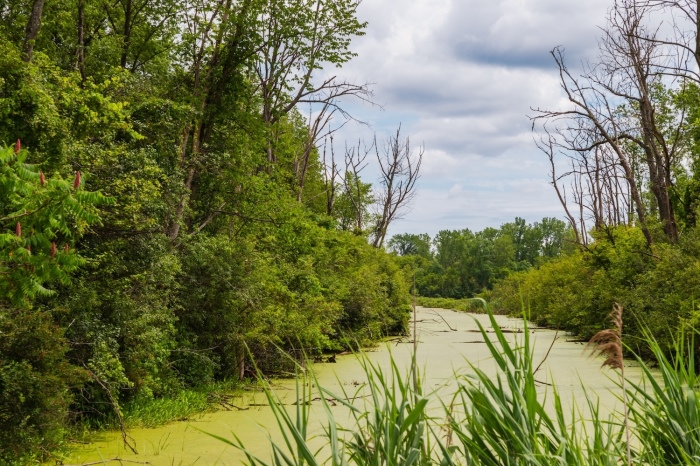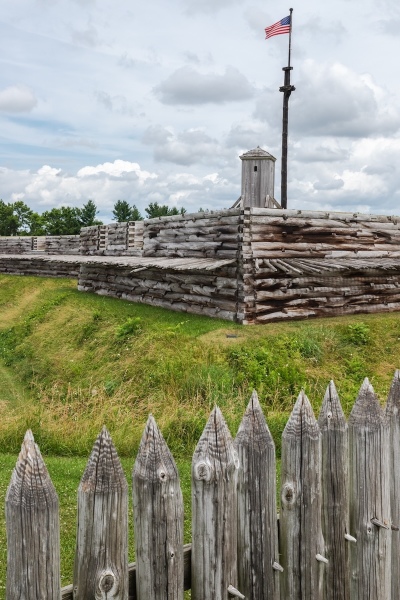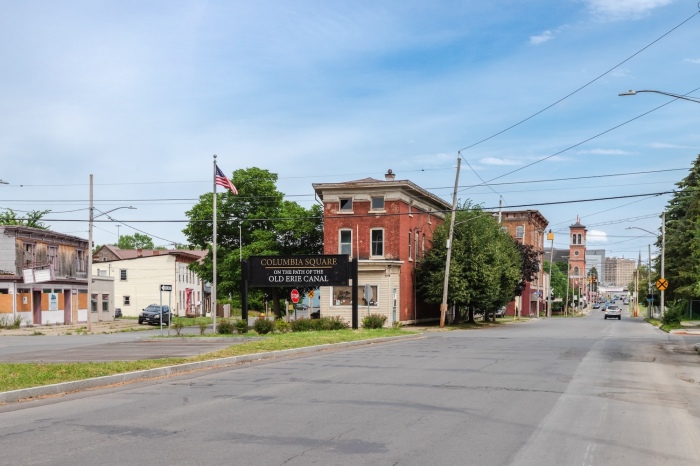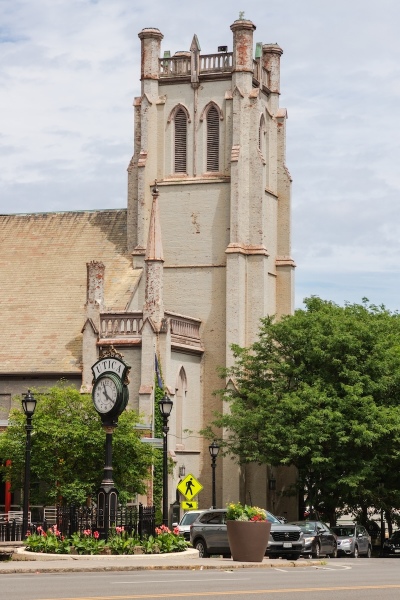
Nestled in New York’s fertile Mohawk Valley between the Adirondacks to the east and the Finger Lakes to the west, Oneida County is a relatively overlooked destination.
During the colonial era, the county was part of the rugged frontier separating the competing British and French colonial empires. After the British vanquished the French from the continent, it bordered the 1763 Proclamation Line that was supposed to stop the 13 colonies from expanding into Indian country.
By the later stages of the Revolutionary War, some of the worst fighting of the war occurred in central New York with Loyalists and Indians on one side and Americans and Indians on the other. Not only were entire families divided, but the once-powerful Iroquois Confederacy fractured under pressure from the two sides in what was, in effect, America’s first civil war.
The complex history of the Revolutionary era is preserved in Rome, Oneida County’s second city. At the heart of downtown and in the shadow of a cathedral-like 19th century Roman Catholic church is Fort Stanwix National Monument, an authentic reconstruction of the original. In 1777, an American garrison successfully defended the fort with its wooden palisades and earthen ramparts from a prolonged British siege.

Following the war, central New York was quickly settled by homesteaders during the first wave of westward expansion. And it was in Oneida County where even further American expansion was made possible by the Erie Canal.
Construction on what became the 363-mile-long canal began in Rome on July 4, 1817 — a symbolic date being 41 years after America’s independence was declared in Philadelphia.
Within eight years, engineers and laborers carved a waterway extending from the Hudson River in Albany to the Great Lakes at Buffalo. When it officially opened on Oct. 26, 1825, the canal reduced travel time from weeks by wagon over bad to nonexistent roads to mere days on the water.
This transformed the country in ways that can’t be overstated.
As the first large-scale civil engineering project in U.S. history, the Erie Canal enabled the rapid movement of goods and people, fueling westward expansion during a formative period of nation-building. In the decades before railroads, it was the canal that connected America’s Eastern Seaboard with the ever-expanding frontier.
My home state of Michigan is a good example. Before the canal, the settlement of what would, in 1837, become the 26th state in the Union was slow and sporadic. After its opening, waves of pioneers took the canal westward, lured by good, inexpensive land. Case in point: many Michigan place names were borrowed from New York.
One of the canal’s more overlooked legacies lies in the country’s religious and cultural fabric.
The ease of travel helped facilitate the spread of new ideas and beliefs that arose out of the fervent revivalism of the Second Great Awakening. Central and Western New York was a hotbed of spiritual activity as new religious movements took root, including the cult of Mormonism, which would eventually become the Church of Jesus Christ of Latter-day Saints.
This year is the bicentennial of what was once derided as “Clinton’s Ditch” after New York Gov. DeWitt Clinton, the driving political force behind its creation.

As part of the commemoration, a replica period boat, the Seneca Chief, will retrace DeWitt’s route from Buffalo to Albany between Sept. 24 and Oct. 25. Clinton traveled aboard the original Seneca Chief for the grand opening 200 years ago.
Without question, the Erie Canal is a lesser-known gem in New York. In fact, it’s a destination in and of itself.
While widened, deepened and slightly altered over the 200 years — originally, it was just 4 feet deep — the canal remains fully operational and open to boaters. Those without a boat can enjoy the canal from land, as a well-maintained trail following the old towpath is open to hikers and cyclists. (Visitors hoping to rent bikes should bring their own, as I was unable to find rentals in either Rome or Utica.)
Utica, the county seat of Oneida County, is like Rome and other places in upstate New York in that its name comes from classical antiquity.
Once a bustling industrial hub along the canal, the city was hit hard by the decades of Rust Belt decline.
Utica’s decades-long downturn had an upside, at least for architecture enthusiasts. It had the effect of preserving countless old buildings in a symphony of styles ranging from Greek revival and Italianate homes to Gothic revival churches from demolition in the name of progress.

While some unsightly modern additions dot the streetscape and parts of downtown retain a gritty feel, there are signs of resurgence and renaissance.
Nowhere is this more evident than at the restaurants Ocean Blue, with its spectacular rooftop terrace, and Nostro, which has elegantly repurposed a midcentury modern former bank. Having eaten in a lot of restaurants, I can honestly say they rival establishments in larger, more popular destinations. Within walking distance are a two-year-old hospital campus and the Utica University Nexus Center, a massive multipurpose sports arena that attracts statewide and regional events.
Utica appears poised to enter a second phase of industrial growth, with an electric bike manufacturer planning to open a factory capable of producing up to 15,000 bikes annually and yogurt maker Chobani investing $1.2 billion in a new production facility.
If you go
I based myself in Utica, which has more accommodation options than Rome. Consider booking a room at the Doubletree by Hilton, which is housed in a landmark 1912 hotel. For a more unique experience, book a room at the postbellum, Italianate-style Rosemont Inn.
In addition to Nostro and Ocean Blue, try Utica’s Portofino, which overlooks the Erie Canal. In Rome, Vine & Fig sources as much food and wine from the region.
Plan your visit to Fort Stanwix National Monument carefully, as it’s closed on Monday and Tuesday. In Utica, one place open on Tuesday is Munson, which is part art school and part museum. It also has a restaurant, Terrace Cafe, that requires reservations.
The closest airport with commercial service to Utica is an hour away in Syracuse. By car, Utica is four hours from Boston, six and a half hours from Washington and five and a half hours from Cleveland.
Dennis Lennox writes a travel column for The Christian Post.

















